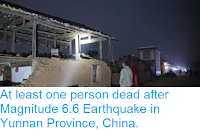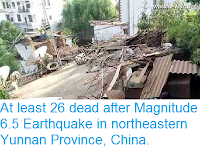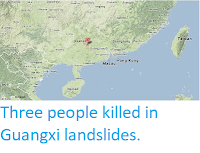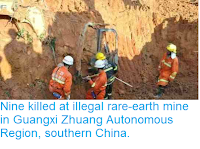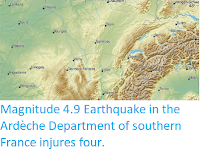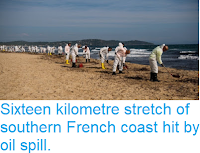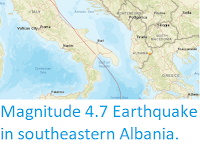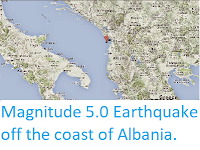At least seventy two people have died in a series of flash floods and landslides in West Pokot County, Kenya, following heavy rains that began in the area on Friday 22 November 2019. The majority of the deaths are reported to have happened in a series of mudslides triggered by the rains. Landslides are a common problem after severe weather events, as excess
pore water pressure can overcome cohesion in soil and sediments,
allowing them to flow like liquids. Approximately 90% of all landslides
are caused by heavy rainfall. Five people are reported to have died when their car was swept away after a river burst its banks; two pedestrians were also killed in the same event. Another eleven people were killed in a house that was buried by a landslide, while seventeen people were killed in a mudslide in the village of Takmal, and twelve more in landslips in the villages of Parua and Tapach. Fatalities due to similar events have also been reported in other parts of Kenya, Somalia, Ethiopian, South Sudan, Sudan, Tanzania, the Democratic Republic of Congo, the Republic of Congo and the Central African Republic.

Debris left by a flash flood in West Pokot County, Kenya. AP.
Like seasonally dry areas, Kenya is particularly prone to flash floods. This stems from two causes; firstly
the arid climate prevents the development of a thick soil layer which
would be expected in less dry areas, so that in much of the area
(non-porous) bedrock is either exposed or close to the surface, and
secondly the hot climate leads to heavy evaporation from nearby seas and
oceans, so that if the wind changes direction and brings water-laden
air to the area, it brings a lot of precipitation with it. This
combination of heavy rainfall and low ground absorbency leads to large
amounts of water at the surface, typically moving downhill at some
speed.
The incident occurred after about a month of heavy rains, in one of the area's two annual rainy seasons. This two rainy seasons per year pattern is typical in equatorial
countries, with rainy seasons around the equinoxes and dry seasons
around the solstices. Upland areas of Kenya have always been prone to
landslides, but the problem has become worse in recent years as a rising
population has led to more agriculture on hill-slopes, in many areas
replacing open woodland where tree roots served to stabilise slopes, and
also to more people living in harms ways.
The aftermath of a mudslide in the village of Parua in West Pokot County on 23 November 2019. Reuters.
The rains this year are thought to have been made worse by the development of a meteorological phenomenon called a Negative Indian Ocean Dipole. Indian Ocean Dipole Phases are similar to the El Niño/La Niña
climatic oscillation that affect the Pacific Ocean. Under normal
circumstances equatorial waters off the east coast of Africa and west
coast of Indonesia are roughly similar in temperature, however during a
Negative Indian Ocean Dipole Phase the waters off the coast of Indonesia
become significantly warmer. As the prevailing currents in the area
flow west to east, this warm water is then pushed onto the shallower
continental shelf of north Australia, where it warms the air over the
sea more rapidly, leading to increased evaporation (which fuels rain)
and a drop in air pressure over the east Indian Ocean and west Pacific.
This in turn drives air currents over the Indian Ocean to flow more
strongly west to east, leading to higher rates of cooling off the coast
of Africa (where more water is drawn up from the cool sea depths) and
more warming off the coast of Indonesia, fuelling a feedback cycle that
tends to remain through the winter season in any year when it forms.
This leads to a particularly wet winter across much of Australia, as
well as a potentially damaging heatwave in the north, while much of East
Africa is at risk of drought (during a Positive Indian Ocean Dipole
Phase the reverse happens, with drought in Australia and flooding in
East Africa).

See also...




